Natives for Clay Soil
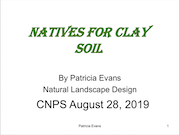 Patricia Evans discussed Natives for Clay Soil on August 28, 2019. Handouts from the program are:
Patricia Evans discussed Natives for Clay Soil on August 28, 2019. Handouts from the program are:
Natives for Clay Soil, (3.4 MB pdf)
Plant list of natives for clay soil (108 KB pdf)
 Patricia Evans discussed Natives for Clay Soil on August 28, 2019. Handouts from the program are:
Patricia Evans discussed Natives for Clay Soil on August 28, 2019. Handouts from the program are:
Natives for Clay Soil, (3.4 MB pdf)
Plant list of natives for clay soil (108 KB pdf)
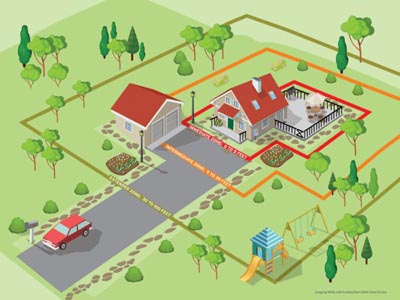 The GWN talk of August 22, 2019 was a call to action! Eugenia Rendler and Patty Ciesla of the Santa Clara County FireSafe Council gave us useful and sobering information about our responsibilities as homeowners. "Defensible Space" was described: "Home Ignition Zone--0-5' from house: use walkways, inorganic mulches, and a metal gate if fence is attached to the house; "Garden area"--5-30' "keep lean, green and clean", using fewer plants and have them well-spaced; and "Reduced Fuel Zone" 30-100'. With all spaces avoid accumulation of leaves, pine needles, dead branches.
The GWN talk of August 22, 2019 was a call to action! Eugenia Rendler and Patty Ciesla of the Santa Clara County FireSafe Council gave us useful and sobering information about our responsibilities as homeowners. "Defensible Space" was described: "Home Ignition Zone--0-5' from house: use walkways, inorganic mulches, and a metal gate if fence is attached to the house; "Garden area"--5-30' "keep lean, green and clean", using fewer plants and have them well-spaced; and "Reduced Fuel Zone" 30-100'. With all spaces avoid accumulation of leaves, pine needles, dead branches.
Details can be found on the SCFSC website: www.SCCFireSafe.org.
More information on defensible space can be found at FireSafe Marin's Defensible Space page and the University of California Cooperative Extension's Fire in California - Defensible Space page.
A booklet Fire-Safe Demonstration Garden was given out with a map of the demo garden at the CA Dept of Forestry and Fire Protection, 15670 Monterey St, Morgan Hill. (Call to verify hours open.)
Handout from the program:
Leaf burn times of California native plants, (link to original document on the Las Pilitas site)
Juanita Salisbury gave this presentation as part of the Gardening with Natives lecture series on August 13, 2019 at the CupertinoLibrary. Native plants are integral to an effective pollinator garden design. Based on functions within the ecosystem, the speaker will explore the interrelationships between plants, pollinators, other insects and animals. The goal is to allow you to design pollinator gardens, thereby leveraging California's wealth of biodiversity into more resilient--and beautiful--landscapes.
Juanita's slides are in PDF format and may be viewed at the following link:
Native Plants for Pollinator Gardens
Link to handout: Recommended Plants for Pollinators & Beneficial Insects - California Central Coast Region. Courtesy of Xerces Society for Beneficial Insects,
Juanita Salisbury has a Ph.D. in Biopsychology from the University of Florida (1988), as well as a Bachelor of Science in Landscape Architecture from West Virginia University (2000). In 2009 she established Juanita Salisbury Landscape Architecture after working for commercial and residential design firms. She has recently turned her focus to California native plant pollinator habitats, and in 2016 established the Primrose Way Pollinator Garden, the first of four pollinator habitat gardens in Palo Alto. Her focus is to research and relay information on of these habitats, as well as to explore opportunities to install more of them.
Frank Niccoli gave a presentation to Gardening with Natives on September 25, 2018 at the Saratoga Library, Saratoga. The basic plant categories discussed included:
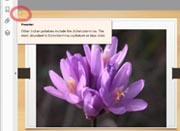
Frank's slides, listing each of the plants including notes, are in PDF format and may be viewed in three parts, at the following links. In order to see the slide's captions (speaker note, including plant names for each slide, mouse over the comment cloud in the upper left-hand side of the slide.
Modern life depends entirely on plants from all over the world, but the plants that nourished the native people of California for thousands of years were only our local plants. Learn what plants these people used for food, medicine, and material sources. You’ll find that the speaker has a passion for California ethnobotany.
Frank Niccoli has been a gardener for over 50 years and is the past president of the founding chapter of the California Landscape Contractors Association. He was voted Member of the Year by his peers in 2001 and 2004. He teaches numerous classes at Foothill College.
Deva Luna conducted a half-day seminar on Lawn Removal & Native Garden Installation on Saturday, October 7, 2017 at Evergreen Valley College, San Jose.
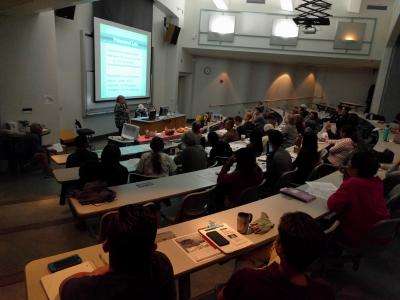 |
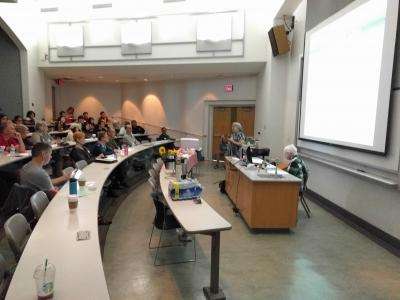 |
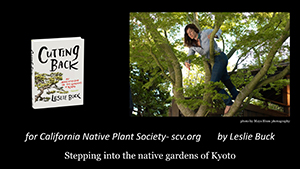
Aesthetic Pruning and Design for the Native Garden
Rather than pruning plants into abstract forms, learn how the Japanese design with local plants to create some of the most natural looking gardens in the world. Leslie Buck will pull from her memoir, Cutting Back—My Apprenticeship in the Gardens of Kyoto, to illustrate how the Japanese use primarily a native plant palate, how the gardens of Japan evoke the wild landscape, and the tricks Japanese garden craftsmen use to design with native plants over time. She will show images of Kyoto gardens in historic buildings, monasteries, private homes and an emperor’s villa.
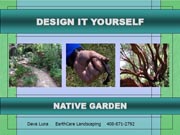
Deva Luna discussed designing your own native garden on August 21, 2017. Handouts from the program are:
Design It Yourself Native Garden (PDF 9.6Mb)
Design Handout with Sample Design (PDF 427Kb)
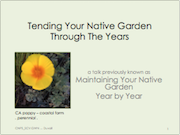
presentation by Peigi Duvall at the Los Altos Library on November 2, 2016
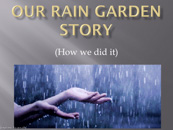
The season’s first rains are pouring down, running off your roof, down your driveway and into the streets, storm drains, and ultimately to the bay and ocean. What if you could capture that runoff instead and use it for your garden, with the excess percolating downward to recharge our local aquifers and purifying the water as it passes through the soil? Learn how rain gardens keep water on site and can solve drainage issues. Find out what they are, how to construct them, and which California native plants are best suited for them.
Madeline Morrow is the Vice President of our Chapter of CNPS. A former computer programmer, she now volunteers in her community and works extensively on her native garden. Her garden was featured in Bay Nature Magazine in March 2013, and is regularly shown on the Going Native Garden Tour.
https://www.youtube.com/watch?v=QVW3O2eAo3o&feature=youtu.be
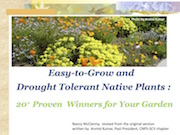 Easy-to-Grow and Drought-Tolerant Native Plants by Nancy McClenny. Presented on October 15, 2015, at the Los Altos Library.
Easy-to-Grow and Drought-Tolerant Native Plants by Nancy McClenny. Presented on October 15, 2015, at the Los Altos Library.
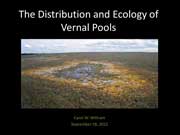 Want to learn about the ecology of vernal pools, check out this great talk by Carol Witham
Want to learn about the ecology of vernal pools, check out this great talk by Carol Witham
The Distribution and Ecology of Vernal Pools
 by Jodie Sheffield, a Seed Specialist in charge of Research and Development for Delta Bluegrass Company located in Stockton, California.
by Jodie Sheffield, a Seed Specialist in charge of Research and Development for Delta Bluegrass Company located in Stockton, California.
No Mow Native Lawns: How to Select, Install & Care for Them
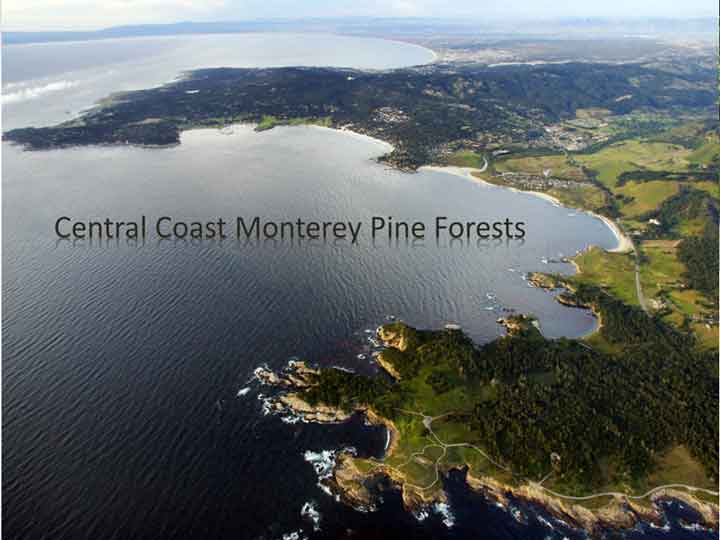
a talk by Nikki Nedeff
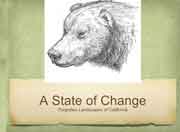
by Laura Cunningham,
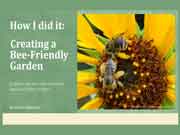
How I Did It: Creating a Bee-Friendly Native Garden
By Debbie Ballentine
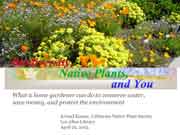
Biodiversity, Native Plants and You
What a home gardener can do to conserve water, save money, and protect the environment
a talk by Arvind Kumar, California Native Plant Society
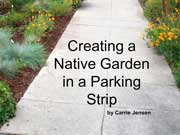
How I Did It: Creating a Native Parking Strip Garden
Many talks from the 2015 Conservation Conference are available on YouTube
https://www.youtube.com/playlist?list=PLyHJjt9y0tE3g_hJPApwRH7IwfeJO90i4
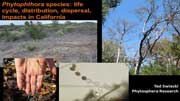
Phytophthora species: life cycle, distribution, dispersal, impacts in California
by Ted Swiecki Phytosphere Research
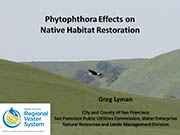 Phytophthora Effects on Native Habitat Restoration
Phytophthora Effects on Native Habitat Restoration
Greg Lyman of City and County of San Francisco. San Francisco Public Utilities Commission, Water Enterprise, Natural Resources and Lands Management Division
Talks about experiences with a restoration that was infected with Phytophthora
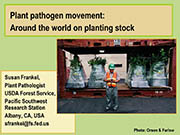 Plant pathogen movement: Around the world on planting stock
Plant pathogen movement: Around the world on planting stock
A study of Phytophthoras moving on nursery stock
by:Susan Frankel,
Plant Pathologist
USDA Forest Service,
Pacific Southwest Research Station
Albany, CA, USA
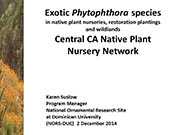 Exotic Phytophthora species in native plant nurseries, restoration plantings and wildlands
Exotic Phytophthora species in native plant nurseries, restoration plantings and wildlands
Central CA Native Plant Nursery Network
Karen Suslow
Program Manager
National Ornamental Research Site at Dominican University
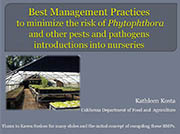 Best Management Practices to minimize the risk of Phytophthora introduction into nurseries
Best Management Practices to minimize the risk of Phytophthora introduction into nurseries
by:
Kathleen Kosta
California Department of Food and Agriculture
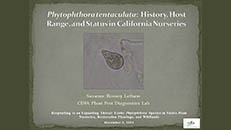 Phytophthora tentaculata: History, Host Range, and Status in California Nurseries
Phytophthora tentaculata: History, Host Range, and Status in California Nurseries
Responding to an Expanding Threat: Exotic Phytophthora Species in Native Plant Nurseries, Restoration Plantings, and Wildlands
December 2, 2014
Suzanne Rooney Latham
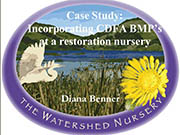 Case Study: Incorporating CDFA BMP’s at a restoration nursery
Case Study: Incorporating CDFA BMP’s at a restoration nursery
Thoughts about what can be done to reduce the risk of introducing pathogens into wild lands, from the experience of a nursery owner.
By Dianna Benner
Watershed Nursery
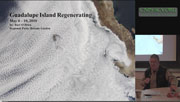 Guadalupe Island Regenerating by Bart O'Brian
Guadalupe Island Regenerating by Bart O'Brian
Volcanic Guadalupe Island, off the coast of Baja California, is the
furthest outpost of the California floristic province. The focus of
Bart’s talk will be on the island’s rare, unusual and endemic plants.
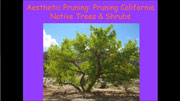
Aesthetic Pruning by Jocelyn Cohen
Techniques for pruning plants in a native garden.
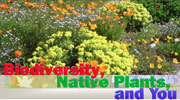
Biodiversity and the Native Plant Gardener
What makes California a world hotspot of biodiversity? Why should a home gardener care? Learn about the critical role native plants play in a healthy environment, how human pressures are driving them to the brink of extinction, and what you as a home gardener can do to save and celebrate them.
Arvind Kumar has been gardening with native plants for over 12 years and is a past president of our CNPS Chapter.
Have you ever gone on a field trip to see a rare plant, or even a common plant that you just want to see? Have you ever thought upon being taken to its site, why is this plant in this location, why not some other nearby location?
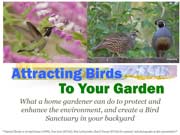

Starting a Native Plant Garden During a Drought
Have you ever lost a native plant for no apparent reason soon after planting? Starting a native garden during a drought can be even trickier than when there has been good rainfall. Come to this workshop to learn the right way to plant and care for native plants, even during a drought.
Kevin Bryant is a past president of our Chapter of CNPS and works as a native plant landscape consultant.
Native Buckwheats, Bonbons for Bees a talk by Pete Veilleux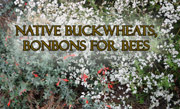
The buckwheat family is a beautiful group of California Native All-Star plants. Buckwheats are host plants and nectar plants for butterflies and moths, and are a bonanza for bees and other pollinators looking for summer food. As if the wildlife value isn’t enough, buckwheats are highly ornamental plants that are very useful and versatile in the garden.
Be inspired to create a beautiful, water-wise garden! See a variety of no-lawn landscaping styles and ideas. Get professional tips on removing that brown, weed-filled patch called a lawn, learn to choose climate-adapted native plants, and find out how you might still qualify for landscape rebates. A talk by Deva Luna on July 9, 2014.
The handout for the presentation: Alternatives To Lawns
The video for the presentation.
A talk by Deva Luna.
The handout for the presentation: Graywater in Your Garden
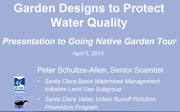 This is a presentation to the Going Native Garden Tour. The links in the slideset will be usefull for folks trying to make the most of rain that falls in your garden
This is a presentation to the Going Native Garden Tour. The links in the slideset will be usefull for folks trying to make the most of rain that falls in your garden
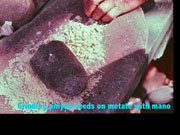
California Ethnobotany: Historical Uses of Native Plants
Join us for a talk explaining the relationship of California native plants to indigenous peoples and how these plants can be used today. John Kipping will tell us how native plants can be used for food, medicine, and material sources, especially for basketry.
John Kipping is a naturalist with a keen interest in sharing his passion and knowledge of the biosphere with the community
A talk by Sherri Osaka at the San Francisco Flower and Garden Show on March 20, 2014. Handouts for the presentation:
Ten Tips for Saving Gallons of Water in the Garden this Year
California Native Plants for Very Low and Low Water Landscapes -- 2014
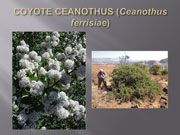
How the Anderson Dam Seismic Retrofit Has Led to New Insights into the Ecology, Evolution and Conservation of the Coyote Ceanothus (Ceanothus ferrisiae)
Anderson Dam bisects the largest population of the federally endangered coyote ceanothus, a serpentine endemic chaparral shrub. In order to mitigate for impacts to coyote ceanothus from the dam retrofit, a new population must be created.
Janell Hillman is a botanist at the Santa Clara Valley Water District, where she has worked for 15 years.
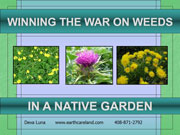 Winning the War on Weeds a talk by Deva Luna
Winning the War on Weeds a talk by Deva Luna
download the handout
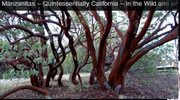 Manzanitas -- Quintessentially California
Manzanitas -- Quintessentially California
a talk by Pete Veilleux a master designer, nurseryman and photographer.
He can be reached through his web site, eastbaywilds.com
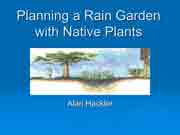
by Allen Hackler
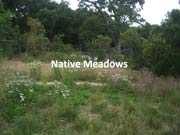
Bay Area Native Plants for the Garden
a talk by Kevin Bryant
 Native meadows, a talk by Alex Von Feldt
Native meadows, a talk by Alex Von Feldt
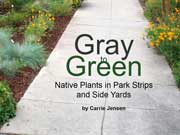
Gray to Green, native plants in parking strips and side yards
a talk by Carrie Jensen
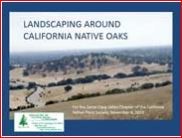
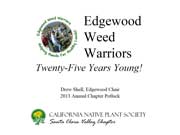 Edgewood, 25 Years Young, a history by Drew Shell
Edgewood, 25 Years Young, a history by Drew Shell
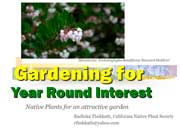
Creating Year-Round Interest in the Garden: Form, Foliage, Berries and Bark,
a talk by Radhika Thekkath
YearRoundInterest-PlantList.pdf
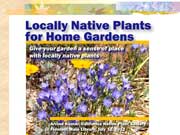
Local Natives For Home Gardens
a talk by Arvind Kumar at the Fremont main library
Local Natives Handout
localnativesforfremont.pdf (118.37 kB)
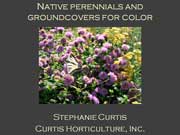
Color from Native Perennials and Groundcovers, a talk by Stephanie Curtis
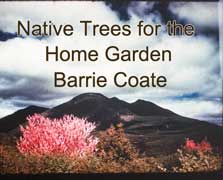 Native Trees for the Home Garden, a talk by Barrie Coate
Native Trees for the Home Garden, a talk by Barrie Coate
Handout calif native trees talk.pdf
pest most commonly found on ca native oaks.pdf